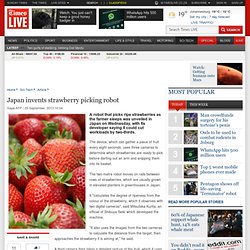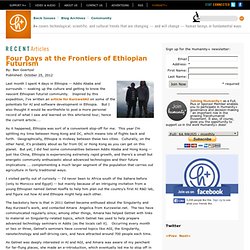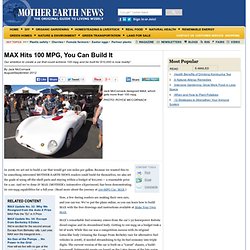Zoom
Trash

Eviation Alice Is an All-Electric Airplane That May Replace Turboprops – Robb Report. Ideo - start. Robust Superconducting Cables Bring Fusion Power Closer to Reality.
Japan invents strawberry picking robot. Japan invents strawberry picking robot.

Open Source Aviation. Massive Airship Off to a Flying Start. Blimps and zeppelins plied the skies in the early part of the 20th Century, carrying passengers and cargo and even serving as military aircraft during the World Wars.

But it didn't take long for airplanes to replace dirigibles for commercial and military flight and by the middle of the 20th Century, airships were mostly use for advertising, sightseeing and surveillance. Is this Elon Musk’s secret design for a high-speed underground train? Elon Musk’s Hyperloop Explained: A Technically Possible Sci-Fi Dream He’s Too Busy To Work On Right Now. Elon Musk, the extravagant entrepreneur know for his futurey projects, has explained his Hyperloop project to Businessweek’s Ashlee Vance ahead of publishing his blog post and holding his press conference today.

Www.spacex.com/sites/spacex/files/hyperloop_alpha-20130812.pdf. Evacuated Tube Transport Technologies. Evacuated Tube Transport Technologies. Africa not just a mobile-first continent. AI and Ethiopia: an unexpected synergy. Four Days at the Frontiers of Ethiopian Futurism. Ben Goertzel October 25, 2012 Last month I spent 4 days in Ethiopia -- Addis Ababa and surrounds -- soaking up the culture and getting to know the nascent Ethiopian futurist community.

Ethiopian kids hack OLPCs in 5 months with zero instruction. What happens if you give a thousand Motorola Zoom tablet PCs to Ethiopian kids who have never even seen a printed word?

Within five months, they'll start teaching themselves English while circumventing the security on your OS to customize settings and activate disabled hardware. Whoa. The One Laptop Per Child project started as a way of delivering technology and resources to schools in countries with little or no education infrastructure, using inexpensive computers to improve traditional curricula. What the OLPC Project has realized over the last five or six years, though, is that teaching kids stuff is really not that valuable.
Airbus unveils its 2050 vision for ‘Smarter Skies’ Global aircraft manufacturer Airbus today releases the latest instalment of the Future by Airbus, its vision for sustainable aviation in 2050 and beyond.

For the first time the vision looks beyond aircraft design to how the aircraft is operated both on the ground and in the air in order to meet the expected growth in air travel in a sustainable way. Charles Champion, Executive Vice President Engineering at Airbus, says: “Our engineers are continuously encouraged to think widely and come up with `disruptive’ ideas which will assist our industry in meeting the 2050 targets we have signed up to.
These and the other tough environmental targets will only be met by a combination of investment in smarter aircraft design and optimising the environment in which the aircraft operates. Future - Technology - Lighter-than-air craft rise again. A behind the scenes look at the project to build a radical new airship that could soon criscross our skies.

If you like the idea of cruising on a ship in laid-back luxury, but prefer the speed and convenience of air travel, there may soon be a solution. Drawing their inspiration from the airships of yesteryear, a new generation of airship-like vehicles could soon be making their way across our skies. In a hangar outside Tustin in California, engineers are preparing one of the most radical designs for testing. ZERO MOTORCYCLES – The Electric Motorcycle Company - Official Site. Japanese geek builds awesome giant beetle robot for some reason (video) We are all doomed.

A Japanese man from Ibaraki Prefecture with too much time has built a gigantic bug mecha that not only looks awesome but also actually works. Takahashi-san is 60 and has begun building the thing in 1998 and now owns a fifteen ton robot. The monster is an impressive eleven meters long. Forget the Volt, Make Way for Electric Trucks. MAX Hits 100 MPG, You Can Build It - Green Transportation. In 2008, we set out to build a car that would get 100 miles per gallon.

Bio-based electric scooter. Ryan Calo: Ten Myths About Drones. Unmanned aerial vehicles (“UAVs”), often called “drones,” are coming to American skies.

In February, President Obama signed a law that requires the Federal Aviation Administration to pave the way for public agencies and, eventually, private companies, to fly drones within the United States. The proliferation of domestic drones has been preceded by a proliferation of news stories about the technology — and of some misconceptions regarding what drones are, and how they might be used. A law professor and a professor of electrical engineering, we’ve identified ten commonly held myths related to the technology and legal framework involved in drones and their use. Myth #1: A model airplane is a drone. Is that really just a fly? Swarms of cyborg insect drones are the future of military surveillance.
By Daily Mail Reporter Published: 16:16 GMT, 19 June 2012 | Updated: 17:05 GMT, 20 June 2012 The kinds of drones making the headlines daily are the heavily armed CIA and U.S. Army vehicles which routinely strike targets in Pakistan - killing terrorists and innocents alike. But the real high-tech story of surveillance drones is going on at a much smaller level, as tiny remote controlled vehicles based on insects are already likely being deployed. Over recent years a range of miniature drones, or micro air vehicles (MAVs), based on the same physics used by flying insects, have been presented to the public. The fear kicked off in 2007 when reports of bizarre flying objects hovering above anti-war protests sparked accusations that the U.S. government was accused of secretly developing robotic insect spies. Mysterious bird-like drone may have popped up in both Iraq and Pakistan, origin still unknown.
Madison Ruppert The quite strange unarmed bird-like drone which was recovered by Pakistani forces in August of 2011 apparently did not just fly over Pakistan, but was also apparently spotted by Iraqi insurgents at least two years before making its way to Pakistan. One might jump to the conclusion that the drone belongs to the United States since the U.S. is involved a great deal of drone operations in Pakistan – which the Pakistani parliament has unanimously declared must end. Flying drone controlled with mind power. Researchers in China have produced a system to control a quad-rotor drone with the mind Image Gallery (4 images) Researchers based at Zhejiang University in China have produced a system for controlling a quad-rotor unmanned aerial vehicle with the mind. Dubbed "Flying Buddy 2", the system uses a standard, commercially-available Electroencephalogram (EEG) headset, a computer and a Parrot AR Drone. Marine Drone. Company To Make Anti-Drone Tech Available To The Masses.
Tired of skies filled with robots? Okay, that hasn't happened yet, but the Federal Aviation Authority expects that by 2020, American skies will have up to 30,000 drones operating domestically, so the possibility of a robot-crowded sky in the near future is very real. Domestic Drone Countermeasures, LLC, is planning to sell commercial anti-drone equipment aimed at protecting private citizens from prying eyes.
Founded in February, DDC was created by the same people behind defense contractor Aplus Mobile, which makes ruggedized computers for other defense contractors. Allosphere. Why immersive virtual reality is the next generation of gaming: part 1. Oculus. Oculus Rift: Step Into the Game. Introducing the Leap. Our Fabulous Future: Corporate America’s Great Tech-Utopia Movies. Future Timeline. What Is Technological Unemployment?
Economists See More Jobs for Machines, Not People. Robot Serves Up 360 Hamburgers Per Hour. UPDATE: To read more about how workers will be affected by automation technology, check out Hub's follow up post Burger Robot Poised to Disrupt Fast Food Industry. Industrial Robotics. Flying robots, the builders of tomorrow. Tiger-stone. Brick-road-laying machine. Two charts on technological unemployment. Source: Washington's Blog. Buster Brown: Robo-Journos Put Jobs In Jeopardy. During the 2011 NCAA Tournament, a budding sports website called StatSheet received an email from tournament officials thanking it for its coverage. They asked where to send press passes so StatSheet writers could attend the games for free. Technology will replace 80% of what doctors do. By Vinod Khosla. Technology Overview.
Data that lives forever is possible: Japan's Hitachi. Top Ten Transhumanist Technologies. By Lifeboat Foundation Scientific Advisory Board member Michael Anissimov. The Most Interesting Developments in Nanotechnologies. Scientists make fake skin that heals and feels. LG unveils flexible plastic e-paper display, aims for European launch next month. Scientists prove it's the same old song – only louder. First full colour images at 100,000 dpi resolution > Agency for Science Technology and Research (A*STAR) > Press Releases. Quantum Stealth; The Invisible Military Becomes A Reality. TV with 16 times resolution of HDTV passed by UN standards body. AS3 Particle Node Sequencer › Experimenting with the Tonfall Audio Engine. Inside Google pictures gives first ever look at the 8 vast data centres. The End of the Web, Search, and Computer as We Know It. The Pirate Bay ditches its servers, sets sail for the cloud.
Megaupload Is Dead. Long Live Mega! 10 Futuristic Materials. Lightest Material in the World. Graphene aerogel takes world’s lightest material crown. New wonder material replaces graphene for future electronic devices. Transparent Aluminum. Researchers Use Liquid Metal to Create Wires That Stretch Eight Times Their Original Length. Russian diamonds: Siberian meteorite crater said to hold trillions of carats. Supermaterials News, Videos, Reviews and Gossip - Gizmodo.
Wood pulp extract stronger than carbon fiber or Kevlar. Glass Works: How Corning Created the Ultrathin, Ultrastrong Material of the Future. Lighter-than-air material discovered. World's Strongest Material: Top 10 Uses.
Additive Manufacturing.